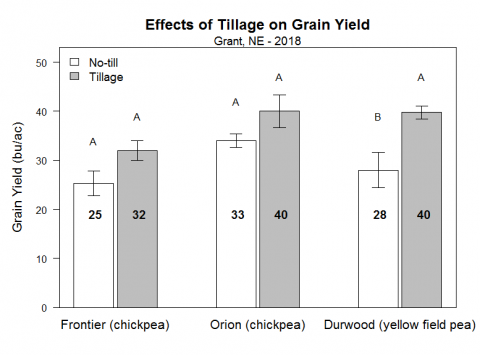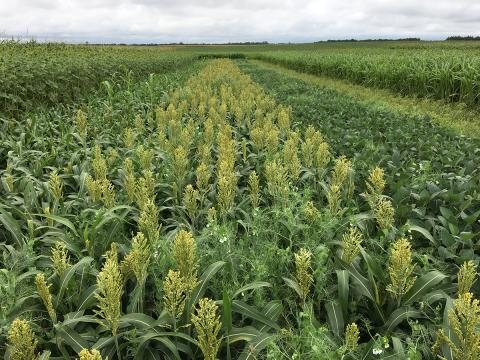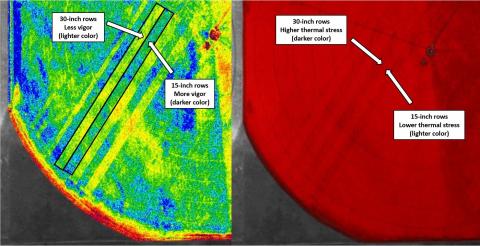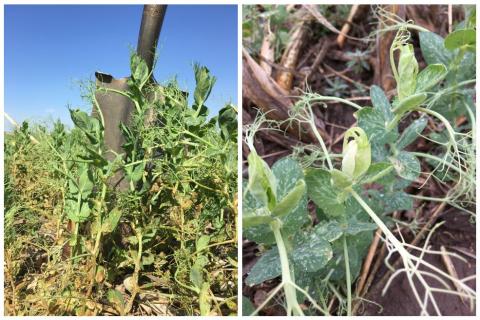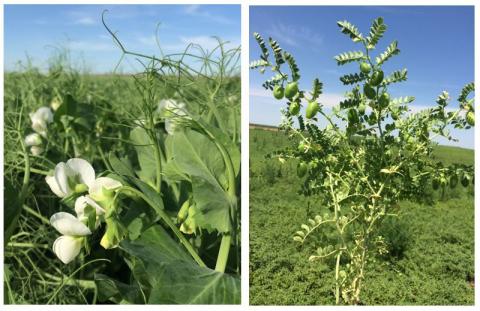Impact of Hybrid Selection, Planting Date, and Seeding Rates on Dryland Corn in Western Nebraska
December 14, 2018
Results from a one-year study in western Nebraska to evaluate the effects of planting date on dryland corn and whether seeding rate recommendations should be reconsidered for late planting dates.

Is Late Season N Fertilization Warranted for Irrigated Soybean in Western Nebraska?
November 2, 2018
On-farm research trials were conducted in three southwest Nebraska counties to study whether a late season N application during the pod setting and seed filling phases would increase soybean yields.
Field Pea and Chickpea Germination and Yield as Affected by Tillage
October 26, 2018
Research conducted at Grant found that spring tillage prior to planting caused faster germination and better yield of field peas and chickpeas as compared to no-till during the above-average wet and cool 2018 growing conditions.
Double Cropping Pulses with Short-Season Crops, Forages, and Cover Crops in Eastern Nebraska
September 6, 2018
A research project in eastern Nebraska is evaluating a double crop production system as a potential alternative to the traditional corn/soybean rotation. Following an early season crop of yellow field peas, short-season crops (corn, soybean, grain sorghum, millet and sunflower) and annual forages (forage sorghum and sorghum-Sudangrass) were planted.
How Row Spacng Affects Irrigated Soybean in Southwest Nebraska
April 27, 2018
While continuous corn is the most common cropping sequence in southwest Nebraska, adding soybeans to a rotation could help break pest cycles. On-farm research comparing 15- and 30-inch soybean row spacing found increased yields of 4-12 bu/ac with an average 7 bu/ac increase with 15-inch rows.
Economic Model for Dryland Crop Rotations in Western Nebraska
March 13, 2018
Economic Model for Dryland Crop Rotations in Western Nebraska (Downloadable Excel® file)
Field Peas—A Guide to Herbicide Carryover And Herbicide Efficacy
February 22, 2018
How to avoid herbicide carryover injury when designing an effective herbicide program for crop rotations integrating field peas.
January Pulse Crop Programs Offer Two Approaches to Fit Your Needs
January 9, 2018
Learn about and engage with the expanding pulse crop industry at two events being held in western Nebraska this month: the Pulse Crops Workshop Jan. 17 at Bridgeport and the Pulse Crops Expo Jan. 18 at Grant. Check the agendas and register for one or both events by Jan. 16.
 Twitter:
Twitter: 
